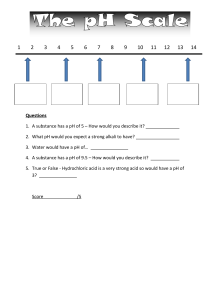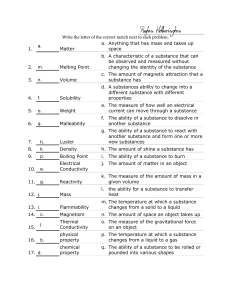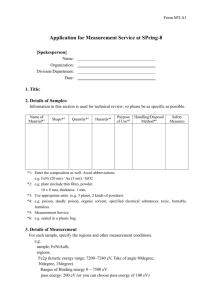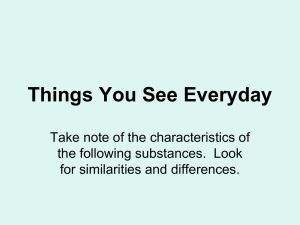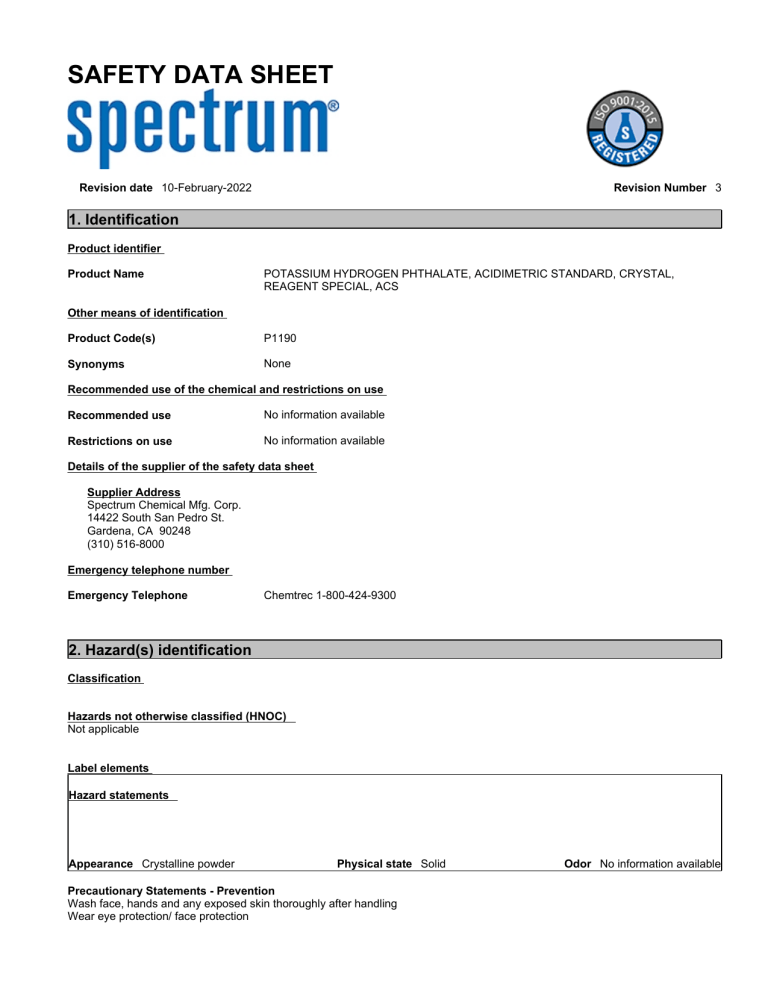
SAFETY DATA SHEET Revision date 10-February-2022 Revision Number 3 1. Identification Product identifier Product Name POTASSIUM HYDROGEN PHTHALATE, ACIDIMETRIC STANDARD, CRYSTAL, REAGENT SPECIAL, ACS Other means of identification Product Code(s) P1190 Synonyms None Recommended use of the chemical and restrictions on use Recommended use No information available Restrictions on use No information available Details of the supplier of the safety data sheet Supplier Address Spectrum Chemical Mfg. Corp. 14422 South San Pedro St. Gardena, CA 90248 (310) 516-8000 Emergency telephone number Emergency Telephone Chemtrec 1-800-424-9300 2. Hazard(s) identification Classification Hazards not otherwise classified (HNOC) Not applicable Label elements Hazard statements Appearance Crystalline powder Physical state Solid Precautionary Statements - Prevention Wash face, hands and any exposed skin thoroughly after handling Wear eye protection/ face protection Odor No information available Precautionary Statements - Response Other information May be harmful if swallowed. 3. Composition/information on ingredients Substance Chemical name Potassium Biphthalate CAS No 877-24-7 Weight-% 100 Trade secret * *The exact percentage (concentration) of composition has been withheld as a trade secret. 4. First-aid measures Description of first aid measures General advice Show this safety data sheet to the doctor in attendance. Inhalation Remove to fresh air. Eye contact Rinse immediately with plenty of water, also under the eyelids, for at least 15 minutes. Remove contact lenses, if present and easy to do. Continue rinsing. Keep eye wide open while rinsing. Do not rub affected area. Get medical attention if irritation develops and persists. Skin contact Wash skin with soap and water. Ingestion Clean mouth with water and drink afterwards plenty of water. Never give anything by mouth to an unconscious person. Do NOT induce vomiting. Call a physician. Self-protection of the first aider Avoid contact with skin, eyes or clothing. Wear personal protective clothing (see section 8). Most important symptoms and effects, both acute and delayed Symptoms May cause redness and tearing of the eyes. Burning sensation. Indication of any immediate medical attention and special treatment needed Note to physicians Treat symptomatically. 5. Fire-fighting measures Suitable Extinguishing Media Large Fire Use extinguishing measures that are appropriate to local circumstances and the surrounding environment. CAUTION: Use of water spray when fighting fire may be inefficient. Unsuitable extinguishing media Do not scatter spilled material with high pressure water streams. Specific hazards arising from the chemical No information available. Hazardous combustion products Carbon Monoxide, Carbon Dioxide. Potassium oxides. Explosion data Sensitivity to mechanical impact none. Sensitivity to static discharge Special protective equipment for fire-fighters none. Firefighters should wear self-contained breathing apparatus and full firefighting turnout gear. Use personal protection equipment. 6. Accidental release measures Personal precautions, protective equipment and emergency procedures Personal precautions Avoid contact with skin, eyes or clothing. Use personal protective equipment as required. Other information Refer to protective measures listed in Sections 7 and 8. Methods and material for containment and cleaning up Methods for containment Prevent further leakage or spillage if safe to do so. Methods for cleaning up Pick up and transfer to properly labeled containers. 7. Handling and storage Precautions for safe handling Advice on safe handling Handle in accordance with good industrial hygiene and safety practice. Avoid contact with skin, eyes or clothing. Do not eat, drink or smoke when using this product. Conditions for safe storage, including any incompatibilities Storage Conditions Keep containers tightly closed in a dry, cool and well-ventilated place. 8. Exposure controls/personal protection Control parameters Exposure Limits The following ingredients are the only ingredients of the product above the cut-off level (or level that contributes to the hazard classification of the mixture) which have an exposure limit applicable in the region for which this safety data sheet is intended or other recommended limit. At this time, the other relevant constituents have no known exposure limits from the sources listed here. Appropriate engineering controls Engineering controls Showers Eyewash stations Ventilation systems. Individual protection measures, such as personal protective equipment Eye/face protection If splashes are likely to occur, wear safety glasses with side-shields. Hand protection Wear suitable gloves. Skin and body protection Wear suitable protective clothing. Respiratory protection No protective equipment is needed under normal use conditions. If exposure limits are exceeded or irritation is experienced, ventilation and evacuation may be required. General hygiene considerations Avoid contact with skin, eyes or clothing. Wear suitable gloves and eye/face protection. Do not eat, drink or smoke when using this product. 9. Physical and chemical properties Information on basic physical and chemical properties Solid Physical state Crystalline powder Appearance White to Off-White Color No information available Odor No information available Odor threshold Property pH Melting point / freezing point Boiling point / boiling range Flash point Evaporation rate Flammability (solid, gas) Flammability Limit in Air Upper flammability or explosive limits Lower flammability or explosive limits Vapor pressure Vapor density Relative density Water solubility Solubility(ies) Partition coefficient Autoignition temperature Decomposition temperature Kinematic viscosity Dynamic viscosity Other information Explosive properties Oxidizing properties Softening point Molecular weight VOC Content (%) Liquid Density Bulk density Values no data available no data available no data available no data available no data available no data available Remarks • Method None known None known None known None known None known None known None known No data available No data available No data available no data available 1.6 Soluble in water no data available No data available no data available 295 - °C 563 °F no data available No data available None known None known None known None known None known None known None known None known None known None known No information available No information available No information available No information available No information available No information available No information available 10. Stability and reactivity Reactivity No information available. Chemical stability Stable under normal conditions. Possibility of hazardous reactions None under normal processing. Conditions to avoid None known based on information supplied. Incompatible materials None known based on information supplied. Hazardous decomposition products None known based on information supplied. 11. Toxicological information Information on likely routes of exposure Product Information . Inhalation Specific test data for the substance or mixture is not available. May cause irritation of respiratory tract. Eye contact Specific test data for the substance or mixture is not available. Causes serious eye irritation. (based on components). May cause redness, itching, and pain. Skin contact Specific test data for the substance or mixture is not available. May cause irritation. Prolonged contact may cause redness and irritation. Ingestion Specific test data for the substance or mixture is not available. Ingestion may cause gastrointestinal irritation, nausea, vomiting and diarrhea. May be harmful if swallowed. Symptoms related to the physical, chemical and toxicological characteristics Symptoms May cause redness and tearing of the eyes. Acute toxicity Numerical measures of toxicity Chemical name Potassium Biphthalate 877-24-7 Oral LD50 > 3200 mg/kg ( Rat ) Dermal LD50 - Inhalation LC50 - Delayed and immediate effects as well as chronic effects from short and long-term exposure Skin corrosion/irritation Serious eye damage/eye irritation Respiratory or skin sensitization Germ cell mutagenicity May cause skin irritation. Classification based on data available for ingredients. Causes serious eye irritation. No information available. No information available. Reproductive toxicity No information available. STOT - single exposure STOT - repeated exposure Aspiration hazard No information available. No information available. No information available. Other adverse effects No information available. Interactive effects No information available. 12. Ecological information Ecotoxicity The environmental impact of this product has not been fully investigated. Persistence and degradability Bioaccumulation No information available. Inherently biodegradable. Other adverse effects No information available. 13. Disposal considerations Waste treatment methods Waste from residues/unused products Dispose of in accordance with local regulations. Dispose of waste in accordance with environmental legislation. Contaminated packaging Do not reuse empty containers. 14. Transport information DOT not regulated TDG not regulated MEX not regulated ICAO (air) not regulated IATA not regulated IMDG not regulated RID not regulated ADR not regulated ADN not regulated 15. Regulatory information International Inventories TSCA Complies DSL/NDSL EINECS/ELINCS ENCS IECSC KECL PICCS AICS Complies Complies This product complies with ENCS: This product complies with China: Complies Complies All the constituents of this material are listed on the Australian Inventory of Chemical Substances (AICS). Legend: TSCA - United States Toxic Substances Control Act Section 8(b) Inventory DSL/NDSL - Canadian Domestic Substances List/Non-Domestic Substances List EINECS/ELINCS - European Inventory of Existing Chemical Substances/European List of Notified Chemical Substances ENCS - Japan Existing and New Chemical Substances IECSC - China Inventory of Existing Chemical Substances KECL - Korean Existing and Evaluated Chemical Substances PICCS - Philippines Inventory of Chemicals and Chemical Substances US Federal Regulations SARA 313 Section 313 of Title III of the Superfund Amendments and Reauthorization Act of 1986 (SARA). This product does not contain any chemicals which are subject to the reporting requirements of the Act and Title 40 of the Code of Federal Regulations, Part 372. SARA 311/312 Hazard Categories Should this product meet EPCRA 311/312 Tier reporting criteria at 40 CFR 370, refer to Section 2 of this SDS for appropriate classifications. CWA (Clean Water Act) This product does not contain any substances regulated as pollutants pursuant to the Clean Water Act (40 CFR 122.21 and 40 CFR 122.42). CERCLA This material, as supplied, does not contain any substances regulated as hazardous substances under the Comprehensive Environmental Response Compensation and Liability Act (CERCLA) (40 CFR 302) or the Superfund Amendments and Reauthorization Act (SARA) (40 CFR 355). There may be specific reporting requirements at the local, regional, or state level pertaining to releases of this material. US State Regulations California Proposition 65 This product does not contain any Proposition 65 chemicals. U.S. State Right-to-Know Regulations This product does not contain any substances regulated under applicable state right-to-know regulations U.S. EPA Label Information EPA Pesticide Registration Number Not applicable 16. Other information NFPA Health hazards 2 Flammability 0 Instability 0 Physical and chemical properties HMIS Health hazards 2 Flammability 0 Physical hazards 0 Personal protection X Key or legend to abbreviations and acronyms used in the safety data sheet Legend Section 8: EXPOSURE CONTROLS/PERSONAL PROTECTION TWA TWA (time-weighted average) STEL Ceiling Maximum limit value STEL (Short Term Exposure Limit) Key literature references and sources for data used to compile the SDS Agency for Toxic Substances and Disease Registry (ATSDR) U.S. Environmental Protection Agency ChemView Database European Food Safety Authority (EFSA) EPA (Environmental Protection Agency) Acute Exposure Guideline Level(s) (AEGL(s)) U.S. Environmental Protection Agency Federal Insecticide, Fungicide, and Rodenticide Act U.S. Environmental Protection Agency High Production Volume Chemicals Food Research Journal Hazardous Substance Database International Uniform Chemical Information Database (IUCLID) Japan GHS Classification Australia National Industrial Chemicals Notification and Assessment Scheme (NICNAS) NIOSH (National Institute for Occupational Safety and Health) National Library of Medicine's ChemID Plus (NLM CIP) National Library of Medicine's PubMed database (NLM PUBMED) National Toxicology Program (NTP) New Zealand's Chemical Classification and Information Database (CCID) Organization for Economic Co-operation and Development Environment, Health, and Safety Publications Organization for Economic Co-operation and Development High Production Volume Chemicals Program Organization for Economic Co-operation and Development Screening Information Data Set World Health Organization 10-February-2022 Revision date No information available. Revision Note Disclaimer The information provided in this Safety Data Sheet is correct to the best of our knowledge, information and belief at the date of its publication. The information given is designed only as a guidance for safe handling, use, processing, storage, transportation, disposal and release and is not to be considered a warranty or quality specification. The information relates only to the specific material designated and may not be valid for such material used in combination with any other materials or in any process, unless specified in the text. End of Safety Data Sheet
